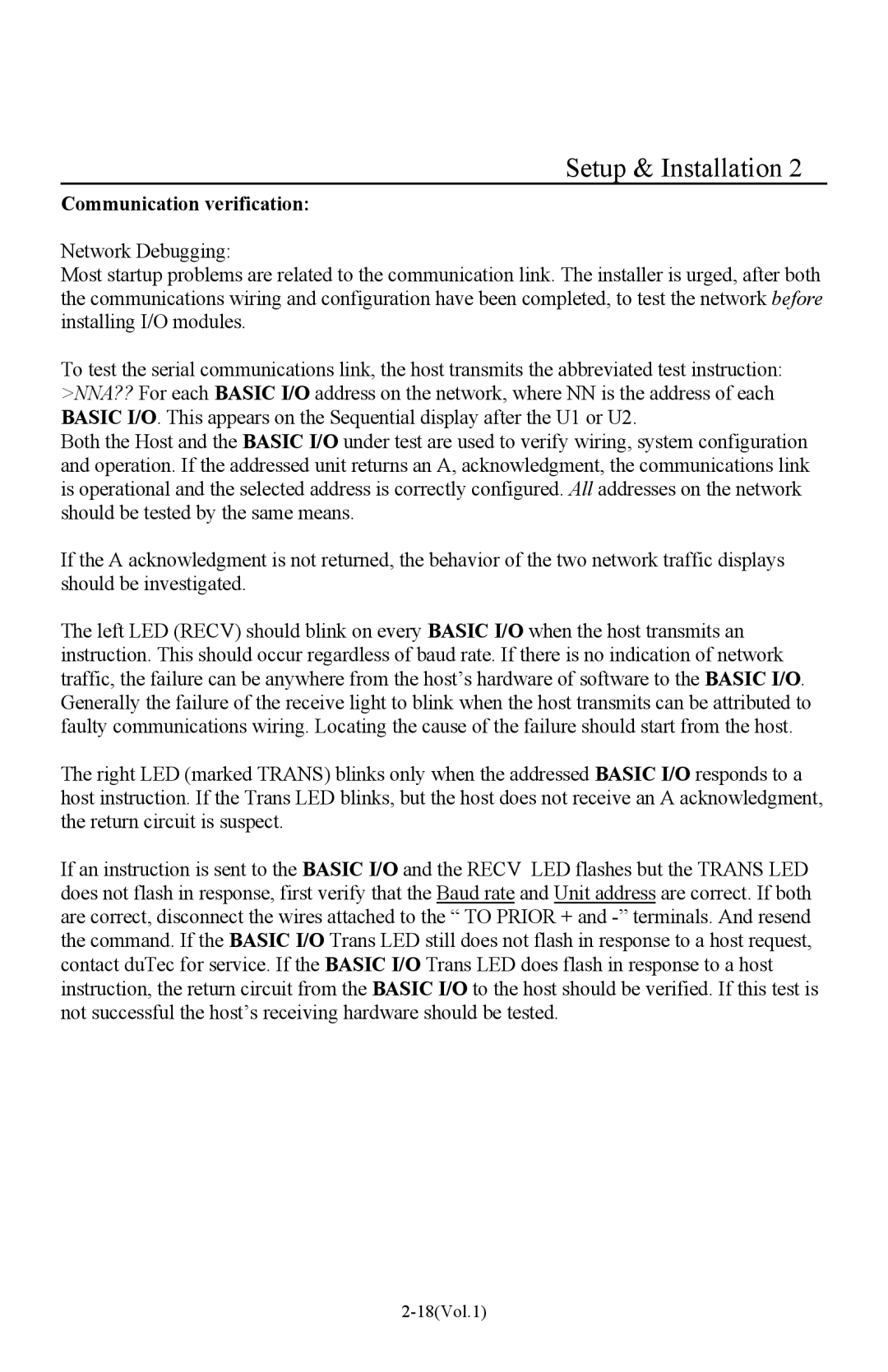Setup & Installation 2
Communication verification:
Network Debugging:
Most startup problems are related to the communication link. The installer is urged, after both the communications wiring and configuration have been completed, to test the network before installing I/O modules.
To test the serial communications link, the host transmits the abbreviated test instruction: >NNA?? For each BASIC I/O address on the network, where NN is the address of each BASIC I/O. This appears on the Sequential display after the U1 or U2.
Both the Host and the BASIC I/O under test are used to verify wiring, system configuration and operation. If the addressed unit returns an A, acknowledgment, the communications link is operational and the selected address is correctly configured. All addresses on the network should be tested by the same means.
If the A acknowledgment is not returned, the behavior of the two network traffic displays should be investigated.
The left LED (RECV) should blink on every BASIC I/O when the host transmits an instruction. This should occur regardless of baud rate. If there is no indication of network traffic, the failure can be anywhere from the host’s hardware of software to the BASIC I/O. Generally the failure of the receive light to blink when the host transmits can be attributed to faulty communications wiring. Locating the cause of the failure should start from the host.
The right LED (marked TRANS) blinks only when the addressed BASIC I/O responds to a host instruction. If the Trans LED blinks, but the host does not receive an A acknowledgment, the return circuit is suspect.
If an instruction is sent to the BASIC I/O and the RECV LED flashes but the TRANS LED does not flash in response, first verify that the Baud rate and Unit address are correct. If both are correct, disconnect the wires attached to the “ TO PRIOR + and
